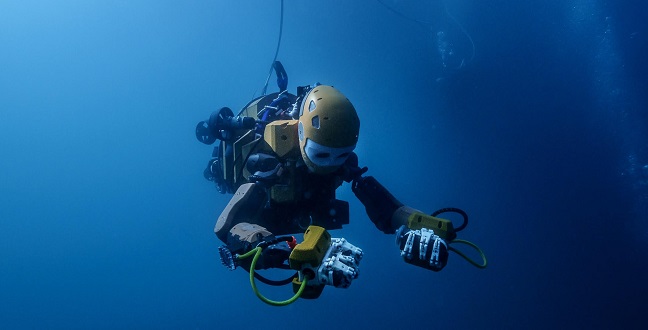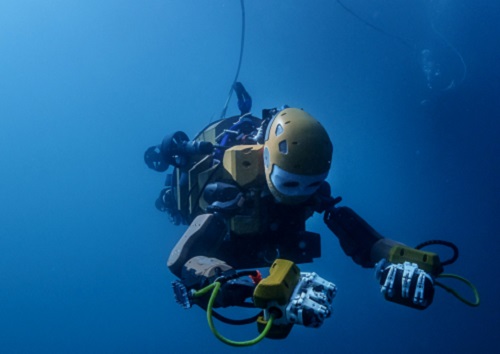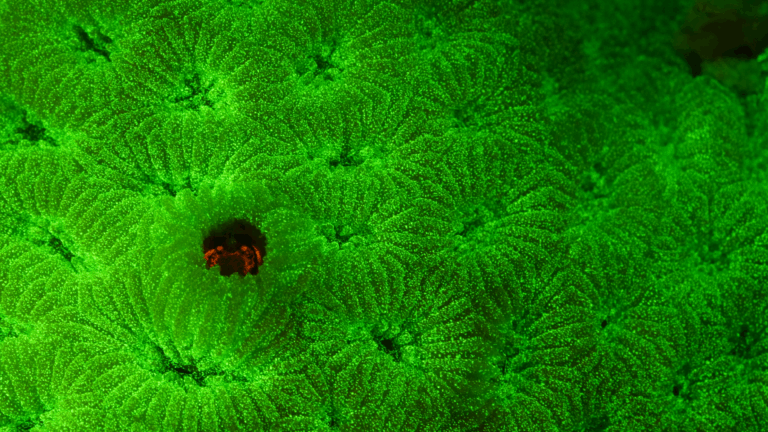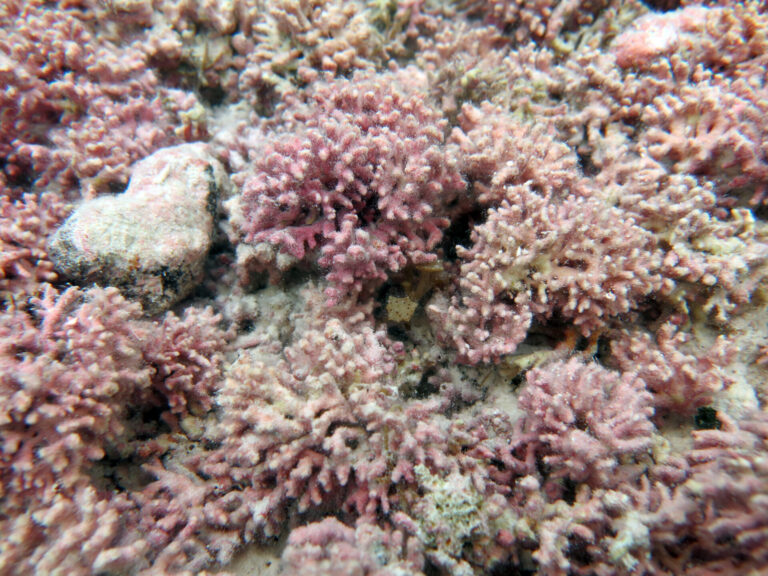Marine Science
Deep thinking brings underwater robot to life
An international, multidisciplinary collaboration that led to the world’s first underwater robotic avatar.


Similar in size to a human diver, Ocean One acts as the extension of a human operator
© 2017 Oussama Khatib
It began with KAUST marine scientist Christian Voolstra’s frustration with his “clunky” equipment. His colleague, electrical engineer Khaled Salama, knew how to build things and had some contacts at Stanford University’s robotics laboratory that could help. They, in turn, knew the people at the California-based Meka Robotics who made robot arms.
Scientists talking to scientists led to a visionary international collaboration that produced the world’s first underwater robotic avatar.
Ocean One is not your run-of-the-mill robot. It acts as the extension of a human operator who uses a haptic-visual interface to feel and see what the robot encounters.
Similar in size to a human diver, Ocean One has the mobility and dexterity required to maneuver and gently grasp objects. Theoretically, it can function at unlimited depths because its sensitive electronics are immersed in oil to protect them from the pressure of the deep sea.
It’s also semi-autonomous—able to navigate and control its buoyancy. Most robots have every movement programmed, explained Professor Voolstra from the University’s Red Sea Research Center. “However, this thing is intelligent. It knows how to swim; you just need to tell it where to swim.” This frees Ocean One’s operator to focus on the specific tasks that the robot is being sent to do.
The interface consists of two joystick-like devices with a grasp-and-pinch controller, a 3D display that provides visual input from the robot’s cameras and a graphical user command center that displays the data coming from the robot’s many sensors.
It was no small feat to design an underwater robot that can do more than human divers or remotely operated vehicles. Professors Voolstra and Salama wanted it to be smart, dexterous and able to travel deep beneath the ocean’s surface while still in contact with its operator on the surface.
This multidisciplinary international team began by creating a virtual interactive environment, similar to a computer game, in which they could test basic functions they wanted their future robot to have. Using joysticks, they were able to test what it feels like when the virtual robot holds something or how it might move things from place to place.
“We didn’t want to end up with something that worked in fresh water but not salt water, so we needed to simulate every single thing,” explained Salama.
“The virtual environment we created gave us so much information that it helped us with the design,” continued Salama. “You’re not just building the hardware; you’re building the whole environment that goes with it.”
Collaboration was key as the two teams learned about each other’s needs. Salama admits that he knew little about marine science. “I can design something that moves, but I had no clue about what is needed in the ocean,” he said.
Voolstra, however, concedes he was awed by the robotics experts. “You go into the lab with people who have built robots since they were 15 years old. Then you explain the properties of water and discover they have no idea about it and you realize it’s levelling off,” he chuckled. “Coming together is awesome.”
Salama’s team learned a lot about sensors by visiting Stanford’s robotics laboratory run by computer scientist, Oussama Khatib. In turn, Voolstra invited some of the Stanford students to go snorkeling in the Red Sea. “Sometimes you just really need to swim in the ocean to get the scale of what you are working on,” he explained. The students saw some of the Red Sea’s spectacular corals and even a pod of dolphins. You’re not actually solving a research question when you do this, Voolstra explained, but it’s really useful in ensuring that these worlds merge. “The students were also 10 times more motivated after the visit,” he said.
Ocean One was initially tested at Stanford’s Avery Aquatic Center. Then it was taken to France where it successfully embarked on a mission, as a proof of concept, to retrieve an artifact from the 17th century naval vessel, La Lune.
Voolstra hopes to use a robot like Ocean One to study the Red Sea’s coral reefs at depths below those accessible by human divers where about 75 percent of reef biomass exists. “The majority of ecological processes actually happen at depths where we rarely do research,” he said. “Plus, these twilight reefs might serve as important refuges because shallow-water corals are exposed to the full force of ocean warming and climate-change effects.
“But potential for applications is limitless,” said Salama. Other robotic avatars could be used to search for and retrieve hazardous materials from inhospitable settings or perform disaster prevention and recovery operations. “Imagine a fleet of robotic avatars working on a petroleum installation where you don’t want to send people to do a task,” he continued.
“It’s putting a human body in an environment where you cannot go, with a robot as a mediator, and where you don’t have to think about every single step the robot takes but rather focus on the task at hand,” explained Voolstra. “I really think this is revolutionary.” A revolution, he and Salama insist would not have been realized without support from KAUST.
Salama recalls the University’s support of the project by saying “We believe in this type of technology. We are willing to assemble the team if you guys are willing to think about big things.”
References
- Khatib, O., Yeh, X., Brantner, G., … Voolstra, C., Salama, K. et al. Ocean One: A robotic avatar for oceanic discovery. IEEE Robotics & Automation Magazine 23, 20-29 (2016).| article
You might also like

Marine Science
Tiny crabs glow to stay hidden

Marine Science
Mass fish deaths linked to extreme marine heatwave in Red Sea

Marine Science
Weeding out the secrets of Red Sea macroalgae

Bioscience
Digging into the world of plant-growth-promoting microbes

Marine Science
Rhodoliths found in a surprise location

Bioscience
Unique microbiome discovered in mountain streams

Marine Science
Examining phytoplankton’s past to reduce future algal blooms

Marine Science



